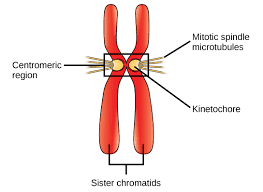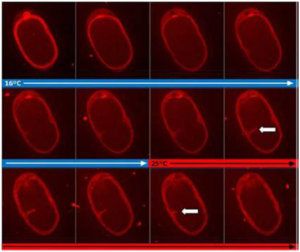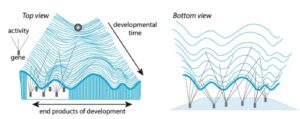Introduction
In the publication Edwards F. et al. (eLife 2018), the authors decipher several molecular mechanisms governing chromosome segregation in C. elegans embryo. The kinase Bub1 ensures accurate chromosome segregation through multiple functions. First, as a component of the Spindle Assembly Checkpoint (SAC) by ensuring coordination with anaphase onset. Second, through SAC-independent unknown functions which the authors reveal. Bub1 regulates kinetochore- spindle microtubule attachments through the downstream regulation of several kinetochore associated proteins: the RZZ complex (which recruits the motor proteins dynein-dynactin) and by preventing the recruitment of the SKA complex.
In this article, the CherryTemp temperature controller was used for live imaging experiments, to image worm embryos at 15°C, 24°C and 26°C.

Summary
Accurate chromosome segregation relies on bioriented amphitelic attachments of chromosomes to microtubules of the mitotic spindle, in which sister chromatids are connected to opposite spindle poles. BUB-1 is a protein of the Spindle Assembly Checkpoint (SAC) that coordinates chromosome attachment with anaphase onset.BUB-1 is also required for accurate sister chromatid segregation independently of its SAC function, but the underlying mechanism remains unclear. Here we show that, in Caenorhabditis elegans embryos, BUB-1 accelerates the establishment of non merotelic end-on kinetochore-microtubule attachments by recruiting the RZZ complex and its downstream partner dynein-dynactin at the kinetochore. In parallel, BUB-1 limits attachment maturation by the SKA complex. This activity opposes kinetochore microtubule attachment stabilisation promoted by CLS-2CLASP -dependent kinetochore-microtubule assembly. BUB-1 is therefore a SAC component that coordinates the function of multiple downstream kinetochore-associated proteins to ensure accurate chromosome segregation.
Publication source
- Source of publication: National Library of Medicine
- Paper title: BUB-1 promotes amphitelic chromosome biorientation via multiple activities at the kinetochore, Edwards F. et al. eLife 2018



